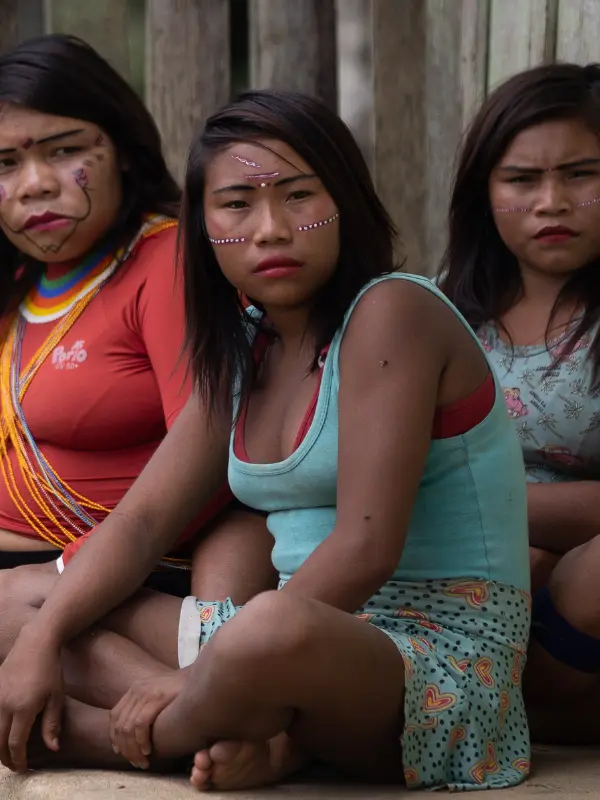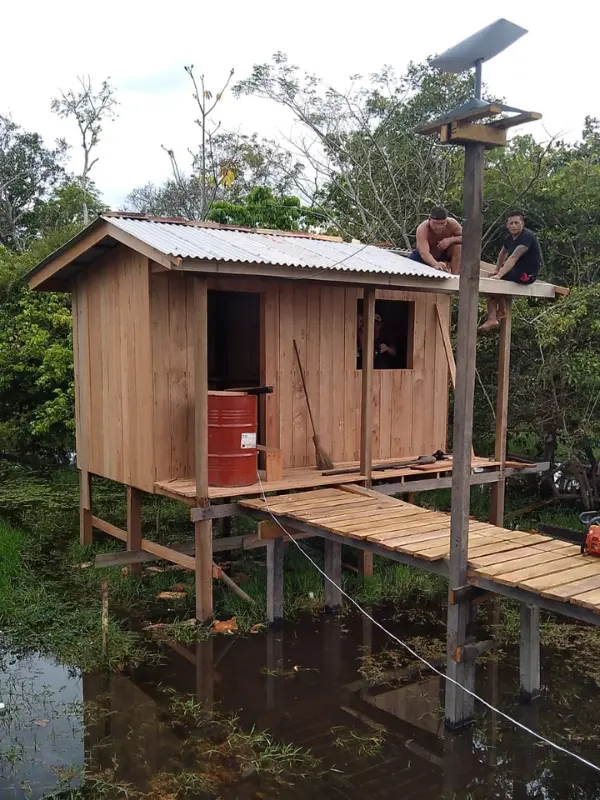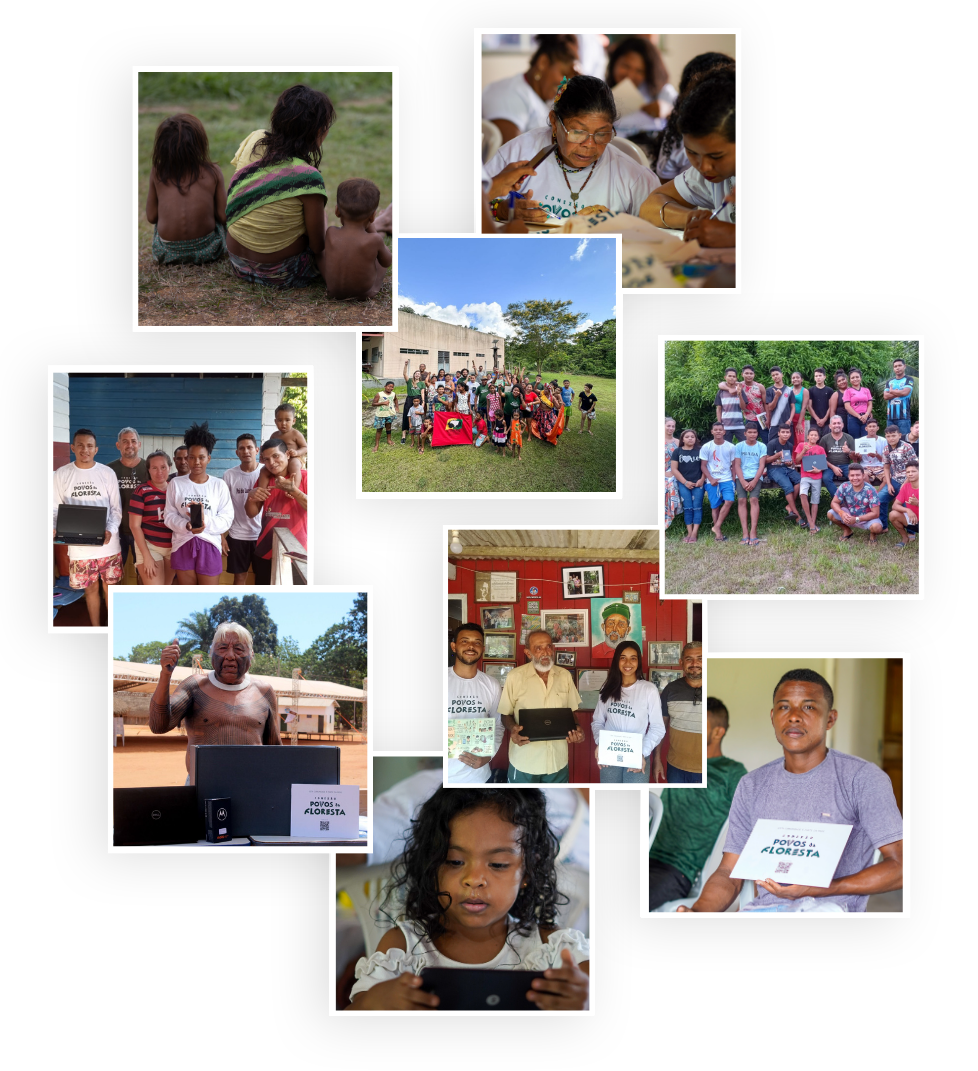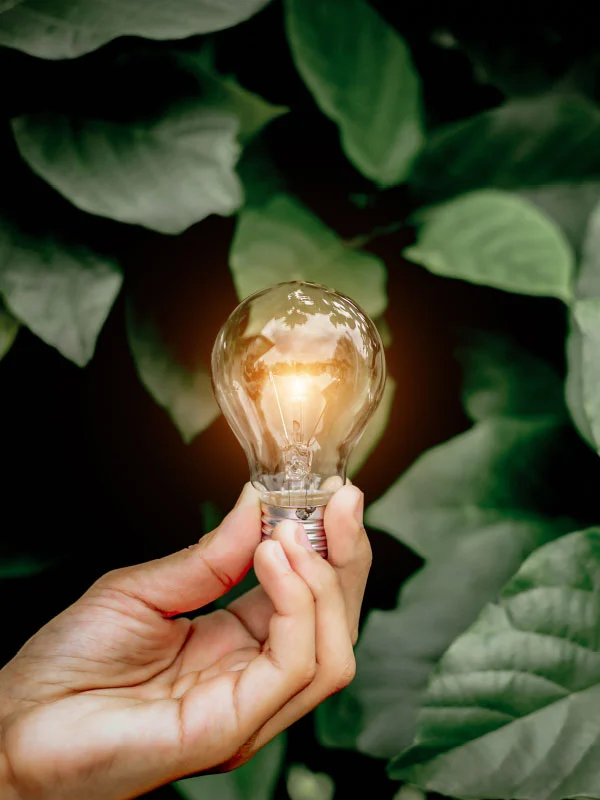
Learn more about the project that brings significant connectivity to the Amazon
Connect Forest People (“Conexão Povos da Floresta”) is a a structured network of partners that aims to connect more than 1 million people from Indigenous, Quilombola, Extractivist and Riverside communities in the Brazilian Amazon via broadband internet. The idea is to combine connectivity and energy with inclusion, security and empowerment programs in these communities.
Connecting…
9,500
Quilombola, Extractivist, Riverside and Indigenous mapped communities in the Brazilian Amazon
2,001
communities connected to the Connect Forest People Network
Click to find out more about the Amazon reality and how the high-speed internet connection helps to preserve it.
Who are the forest peoples?

Indigenous People
Click to learn more

Extractivists
Click to learn more

Quilombolas
Click to learn more
INDIGENOUS PEOPLE
The Indigenous peoples of Brazil number more than 1.6 million people, according to the 2022 Census. They maintain a deep connection with nature, being protectors of their territories, forests and rivers. Their traditions are tools of resistance and the fight for rights.
They currently inhabit 477 homologated Indigenous Lands (TIs), which are home to 305 peoples and 180 languages. Their main demands include land demarcation, access to quality education and healthcare. They are guided by local leaders and represented in regional, national and international organizations.
Riverside and extractive populations
Extractivist and riverside peoples live on the banks of rivers and in floodplains or high plains in Brazil, adapting to the floods and ebb tides. Their main activities include fishing, artisanal hunting, agriculture and the extraction of fruit, seeds and other natural resources.
With roots in indigenous, quilombola and Portuguese cultures, these peoples have ancestral knowledge about the forest, rivers and animals, and are considered guardians of the environment. Many of their territories are recognized as Extractive Reserves (Resex), sustainable Conservation Units (UCs).
Most of this population lives in the Amazon, where there are around 7,000 people, according to the Joshua Project.
Quilombolas
Quilombolas are descendants of enslaved Africans, formed during the colonization of Latin America. They are traditional black peoples, both rural and urban, with cultural identities linked to the land, forest and water. Their communities stand out for their subsistence farming and symbolize resistance to oppression, preserving ancestral African customs.
The term “quilombo” comes from the Bantu language and refers to the places of refuge of enslaved blacks. According to the 2022 Census, there are more than 1.3 million quilombolas in Brazil, of which 80,000 live in the legal Amazon, representing 48.38% of the quilombola population in delimited areas.

Our goal
To connect more than 8,500 forest communities via broadband internet by the end of 2026.
Inclusion, security and empowerment program
Along with the use of community internet management technologies, an ecosystem of platforms is being developed to strengthen the network among traditional peoples. In this context, the internet becomes a tool for social transformation, meeting the demands of communities.
Territorial protection
Autonomy of vigilance for and by the forest peoples, guaranteeing their territories.
Health
Telehealth, remote care and health education, engaging people to stay longer in their territories with quality of life.
Education
Literacy and digital empowerment of communities through meetings and content made available online and thematic meetings to complement education.
Entrepreneurship
Business development thanks to remote communication via fast internet.
Culture and Ancestry
Keeping the culture alive for future generations, increasing the visibility of the forest peoples’ traditions to the world.

Learn about our technologies
The internet without support is like sailing adrift in the infinity of the ocean. Our technologies were developed together with the main issues observed by forest peoples and partners from the first implementations of projects linked to communication and connectivity.
